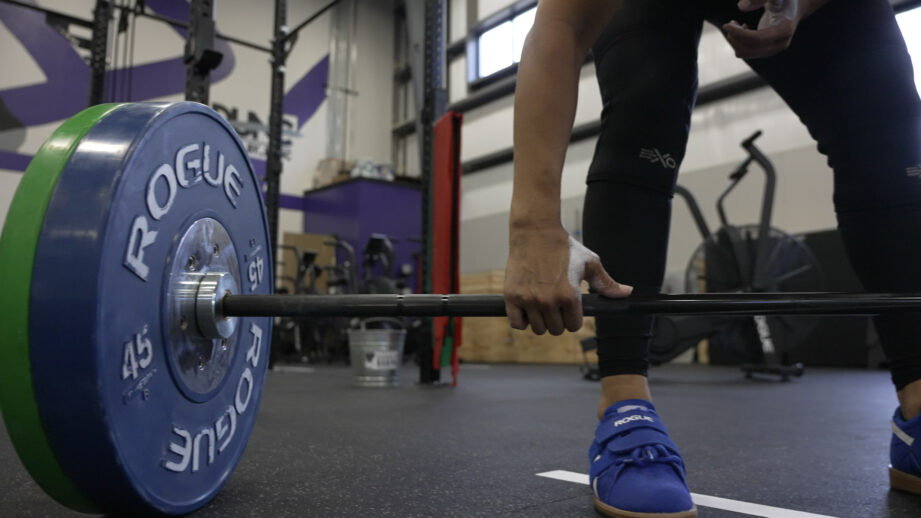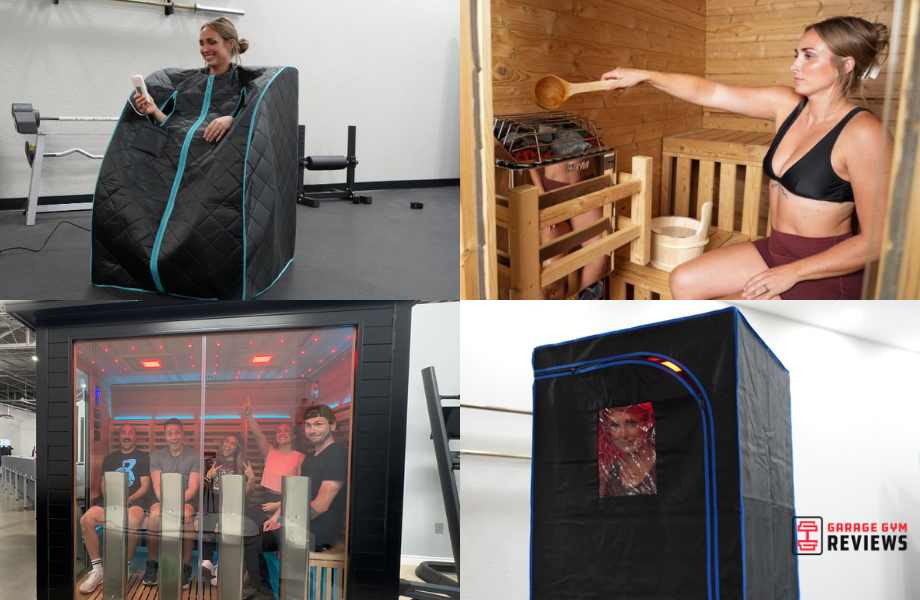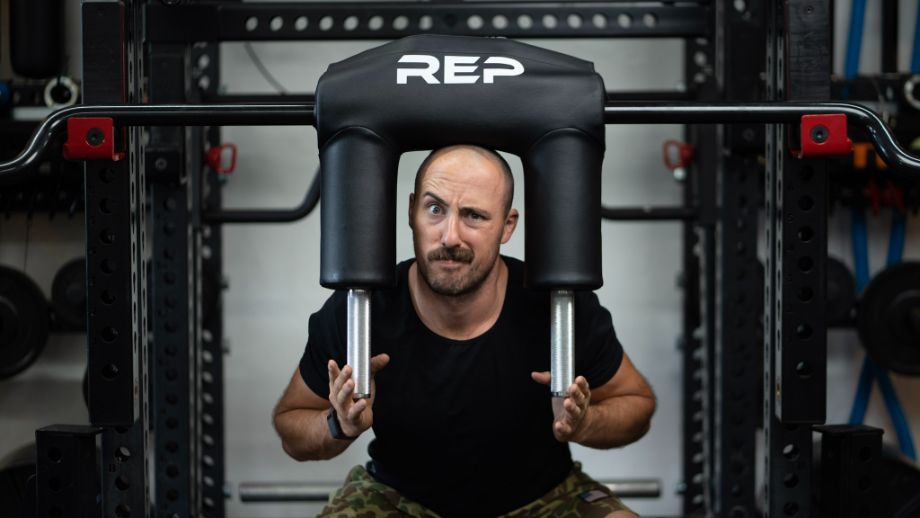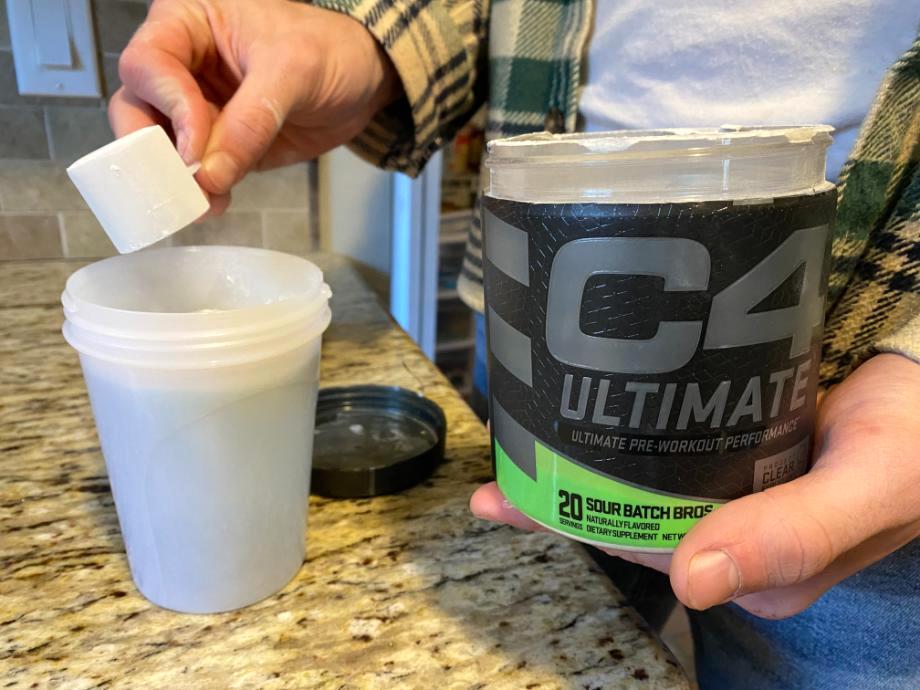Have you ever found yourself in a gym loading a bar up with some weight, getting yourself pumped up for a big deadlift, when the thought crosses your mind, “How much weight am I about to lift?” It happens often and probably more than we want to admit; I even get a little lost in the numbers from time to time, and I’ve been using barbells and weight plates for over two decades. We don’t always go to the gym wanting to do math, but it’s essential to mark our continual progress.
The beginning of any barbell movement starts with that: a barbell. Therefore, to determine how heavy you are lifting, we need to answer the question: how much does a barbell weigh? The answer to that isn’t simple, though, because it largely depends on what kind of bar you are using. Let’s dive deeper into the different types of bars that you can find in commercial gyms and CrossFit boxes, what they weigh, and when to best use them. We’ll also go over other factors to include when determining how much weight is on a bar.
Types of Barbells And Their Weight
Different barbells have been created for different needs and exercises. The different types of barbells can vary in thickness, length, and—of course—weight. There are even finer points and differences within the same types of bars. Listed below are some of the more common types of bars you’d see in a gym, as well as some less common bars, and how much they weigh.
Standard Barbell
- Weight varies, but is typically between 13 to 20 lbs
- Length also varies, but typically 5 to 6 ft
- Weight capacity up to about 250 lbs
The name “Standard” is a little deceiving when it comes to this barbell, as this is often not the typical barbell you would see at most commercial gyms. The biggest difference in standard bars is that the diameter of the entire barbell, shaft, and sleeves is 1 inch. Only standard weight plates can be used on these barbells. Most bars and plates are made with a 2-inch barbell sleeve, meaning a standard barbell has very little crossover to other brands and products.
In addition, the sleeves do not rotate like most bars, meaning you should not use this bar for complex movements like a clean. It has a lower weight capacity compared to other barbells as well. Because of its lower price point, I would only recommend a standard barbell for beginners, considering starting a home gym, but those who aren’t sure if they’re ready to invest in it yet.
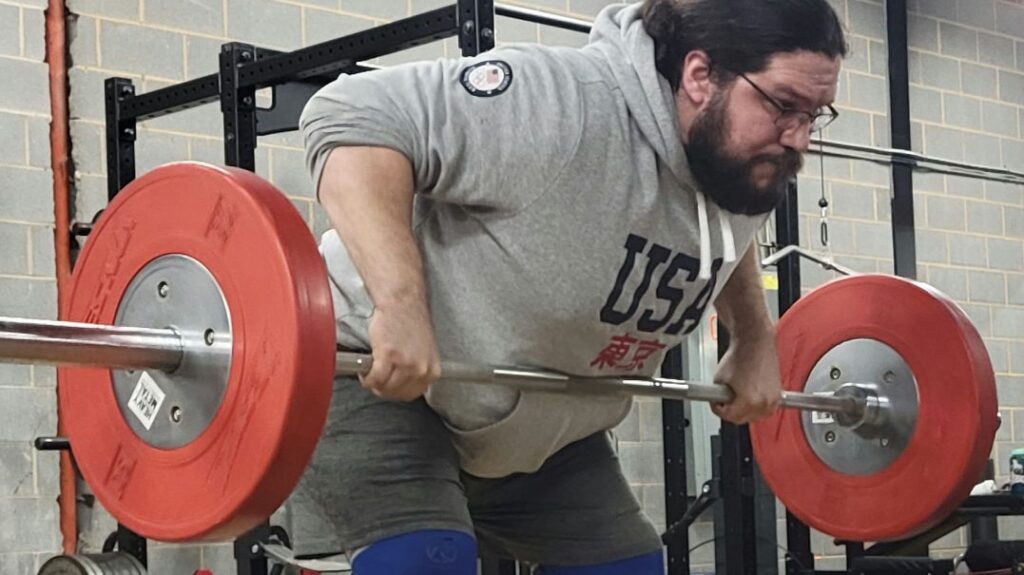
Olympic Barbell
- Weighs 20 kg (44 lbs)
- Length of 86.6 in
- 28 mm to 32 mm (approx. 1 in) shaft
- 2-inch wide rotating Olympic sleeves
The Olympic barbell is the most common barbell you will see in any gym you visit. Of all Olympic barbells, the most produced and used is the 20-kilogram (44-pound) bar, often referred to as a”men’s barbell.” Although it’s called a “men’s bar,” women can and do use this barbell in a multitude of ways, including in powerlifting competitions. Like with most barbells on this list, there are variations between bars, but those variations are slight. Typically, it’s a straight barbell just over 7 feet long, with an inch-wide shaft and knurling along the bar for better grip, and also center knurling for when the bar rests on the shoulders or neck. The sleeves are 2 inches wide, meaning most Olympic weight plates can be used easily with this type of barbell.
The great thing about Olympic bars is that they have rotating sleeves, meaning the sleeves and weight plates can rotate free from the rest of the barbell. This makes the barbell ideal for Olympic weightlifting movements, like the snatch and the clean and jerk, but it can also be used for slower movements just as easily, like the deadlift or overhead press.
The sleeves rotate on either bushings or bearings. Bearings will get you a better spin and keep that great spin for longer, but will also raise the price of the barbell. Bushings have a bit less spin, but will handle most exercises you throw at them, and generally cost less. If you are interested in Olympic weightlifting, get a barbell with bearings; otherwise, it depends on what you’re willing to spend on your barbell.

Women’s Olympic Barbell
- Weighs 15 kg (33 lbs)
- Length of 79.1 inches
- Smaller shaft width than men’s bars (25 mm)
- 2-inch wide rotating sleeves
A women’s Olympic barbell follows the same principles as the men’s barbell, but the weight is lighter at 15 kilograms, and the bar is shorter as well. In addition to this, the women’s bar has a smaller diameter on the shaft (25 millimeters), making it easier to grip. Although anyone can use this type of bar, it’s marketed towards women because they typically have smaller hands. (Women’s bars can also be great for youth athletes as well.) The sleeves are also 2 inches, allowing for use with Olympic plates.
One big change from the men’s bar is a lack of center knurling. The rest of the knurling is present and allows for a solid grip on the bar when lifting, necessary for a heavy clean. All Olympic barbells have high tensile strength, meaning they can absorb force from power movements pretty well, a must-have for weightlifting.
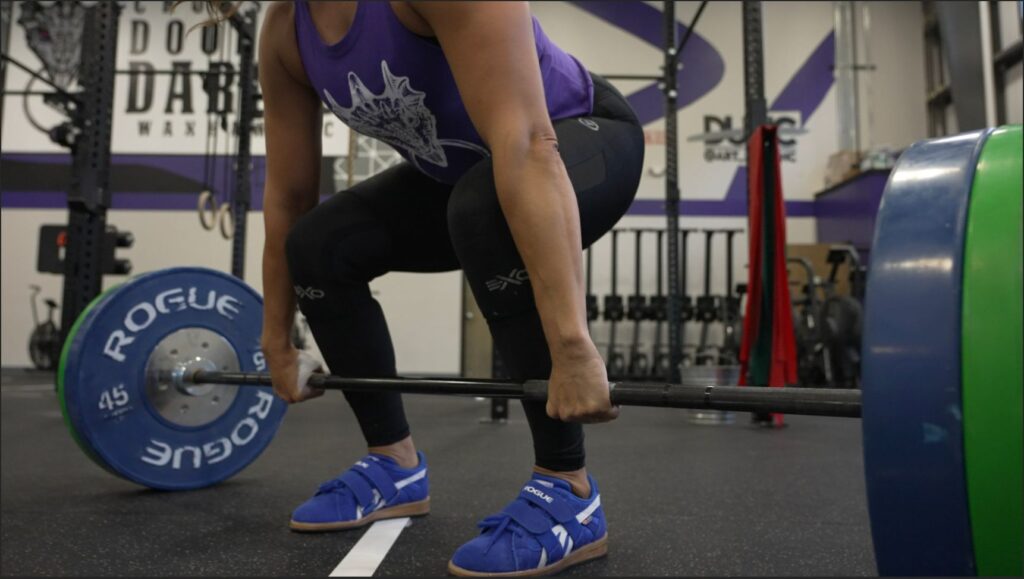
Training Bar
- Weighs 10 kg (22 lbs)
- Length of 66 in
- 25-mm wide shaft
Yet another variation of the Olympic bar is the training, or junior bar. This barbell is ideal for beginners in strength training or for youth athletes, particularly in the Olympic lifts. The lighter weight keeps the focus on form, and it also has a smaller diameter for an easier grip. Weights can vary depending on the brand, but most I’ve handled are 10 kilograms, or 22 pounds.
Powerlifting Barbell
- Similar to Olympic bars, but optimized for powerlifting
- Tends to have a slightly thicker diameter
- Higher tensile strength makes for a more rigid barbell
Powerlifting events have three disciplines: the back squat, the bench press, and the deadlift. A powerlifting barbell is made and designed with those three exercises in mind. Compared to an Olympic barbell, powerlifting bars will have a wider diameter of the shaft and also a higher tensile strength, making them a more rigid barbell for strength movements. Usually, these bars are made with bushings, as barbell spin is not as big a factor in these slower strength exercises.
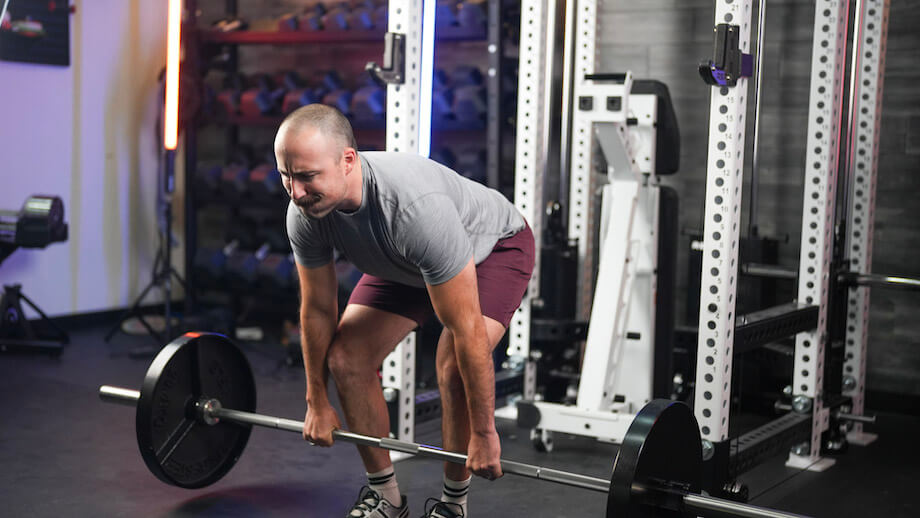
Trap Bar
- Weight varies from 40 to 70 lbs
- Grip is usually comparable to an Olympic barbell’s width
- The hexagonal design allows for a more balanced center of gravity on a deadlift
A trap bar, also known as a hex bar, is a bar that splits into a hexagonal shape in the center, large enough for the lifter to stand in. The bar has grips in the center to grab, typically the same width as an Olympic barbell.
The design of the barbell helps keep the center of gravity more central in relation to the lifter during a lift from the floor, whereas a normal barbell has the weight distributed towards the front of the lifter. This is great for putting less stress on the back during a deadlift. Although used primarily for deadlifts, trap bars can also be used for other exercises as well.
RELATED: Titan Open Trap Bar Review
The weight can vary, but trap bars weigh between 40 and 70 pounds. The trap bar’s design has also changed over the years. Recently, open trap bars have been created, which leave one side of the hexagon shape completely open, allowing for the athlete to easily step into the center of the bar. Additionally, the bar can be propped up on one side to easily load or unload the weight from the bar.
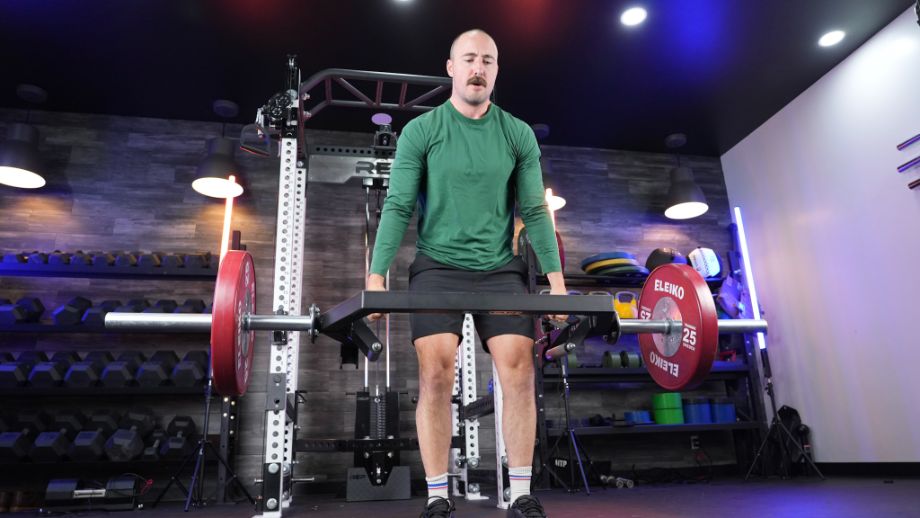
Safety Squat Bar
- Weights can range from 45 to 70 lbs
- Designed to minimize stress on shoulders and arms while gripping bar
- Great for working through an injury, or to change up your squat training
Weighing between 45 and 70 pounds, a safety squat bar has a center padding with two handles protruding from the bar, where you can grip the bar without reaching back for the actual barbell. This is helpful for someone dealing with a shoulder or arm injury who can’t grip a normal weightlifting bar well.
While it’s great for working through an injury, the safety squat bar is also a fantastic way to change up your training, too. The structure of the bar shifts the weight more forward, giving us a center of gravity that is somewhere between a back squat and a front squat. This creates a different stimulus for your training and variety in your program.
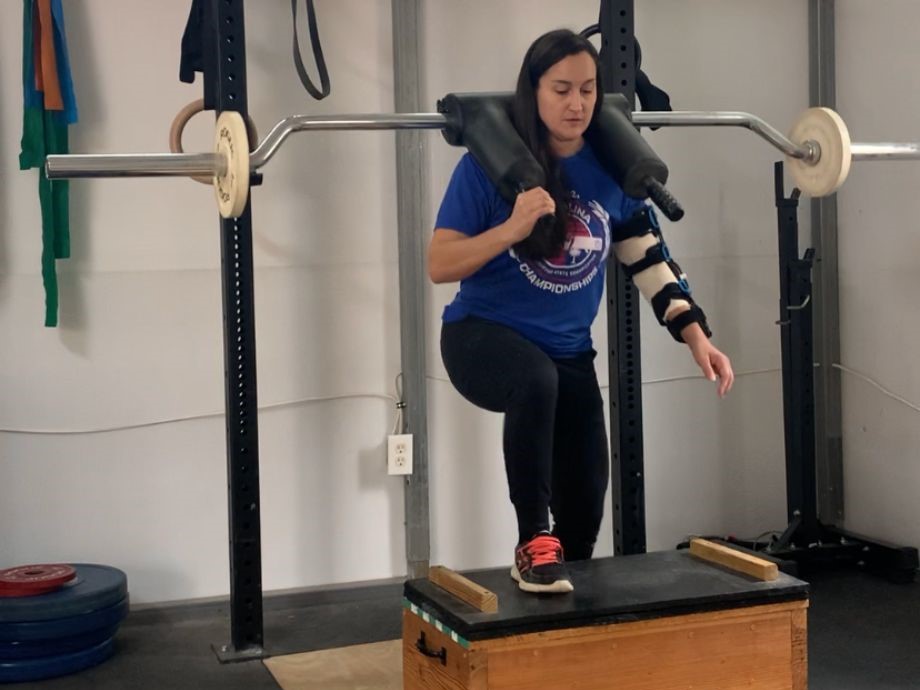
EZ Curl Bar
- Weight is typically between 25 and 35 lbs
- Length is short, typically around 4 ft
- Bent shaft in a “W” shape to allow for a better grip for curls
AN EZ curl bar is made mostly for upper body exercises, like bicep curls or tricep extensions. The shaft is bent into a “W” shape to allow for a more natural and comfortable grip for the wrists. Most curl bars are short, too short to put on a squat rack, although some companies offer a rackable EZ curl bar. A typical curl bar weighs between 25 and 35 pounds.
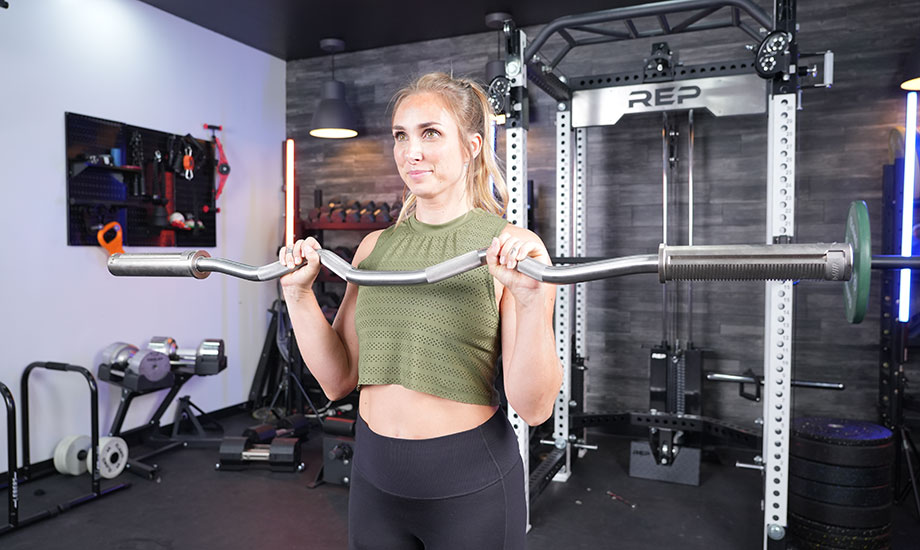
Swiss Barbell
- Weighs between 35 and 50 lbs
- The center of the bar is a ladder design, allowing for different grips
- Used for bench press and other upper-body exercises
A Swiss barbell, also known as a multi-grip barbell, is a unique way to train different grips with one bar. Weighing between 35 and 50 pounds, the middle of the bar is designed like a ladder, with multiple “rungs” that can be used for grip. You can have a close grip, a wide grip, or an angled grip in most designs. The Swiss bar is a specialty bar, often used for presses and focusing on muscle groups in the upper body.

Axle Bar
- Typically weighs about 25 lbs
- 7 ft long
- Shaft and non-rotating sleeves are two inches wide
- Great for strongman and grip training
The axle Bar is a thick, two-inch bar with no rotating sleeves, used primarily for grip training. The wide diameter requires a strong grip to hold and exercise with. Additionally, the lack of rotation in the sleeves makes any rotating movement feel like a lot more due to the momentum of the bumper plates loaded on the bar. Typically weighing 25 pounds, an axle bar is a great grip trainer that is often used in strongman training.
Smith Machine Bar
- Weight ranges greatly, but typically between 15 and 25 pounds
- Connected to a Smith machine, allowing for squats (and other exercises) in one plane of motion
- Counterbalances inthe machine can factor in how heavy the bar feels
Most commercial gyms will have a Smith machine somewhere in the facility. This piece of gym equipment is unique in that it is a squat rack with a bar connected to rails, allowing the barbell to only move in one plane of motion—usually up and down.
While I’m more of a fan of functional movements and free weights, the Smith machine can be used for some movements to vary your training, such as rows or a bench press. However, as a weightlifter and coach, I would always recommend you learn how to squat outside of a Smith machine, where you will also get the most functional benefits.
A Smith machine bar’s weight varies greatly from machine to machine. Some machines will attach a 45-pound Olympic barbell, while others will use a specific bar for the machine, weighing as little as ten pounds. A typical range, however, is between 15 and 25 pounds. Despite the lighter bar, most machines can still hold several hundred pounds.
RELATED: The 7 Best Smith Machines
Another thing to factor in is a Smith machine’s use of counterbalances. The counterbalances in the Smith machine alleviate some of the weight of the bar, making it feel lighter than it really is; for example, a 25-pound bar may only feel and act like 22 pounds. Usually, if this is the case, the weight the bar is replicating is displayed on the side of the machine.
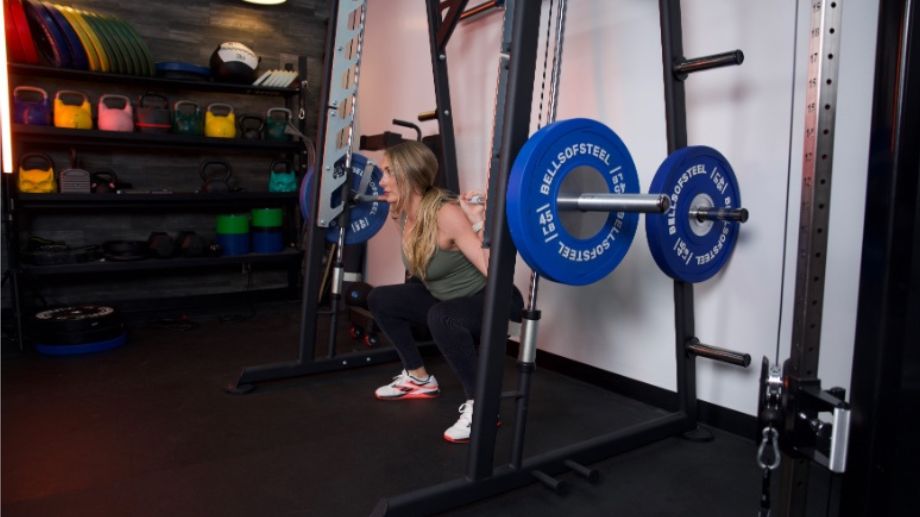
Factoring in Collars and Plates
So we’ve gone over the type of bars you could be using in the gym; what else do we add up to determine how much weight is on a bar? Well, obviously, the weight plates are a big part of it, but there are also the spring clips or clamps we are using to keep the weights on the bar. When should we include that weight?
Weight Plates
The biggest thing to remember about weight plates is whether you are using kilogram plates or pound plates. As a competitive weightlifter, I deal a lot with kilograms, but your gym may have only pound plates available.
Either way, the weight of each bumper plate should be clearly marked on the outside of the plate; the heaviest kilogram plates are 25 kilos, and the heaviest pound plates are 55 pounds. When adding weights together, I let the plates determine how I do math to ease the process; if I use kilo plates, then I treat my bar as a 20-kilogram bar (44 pounds), but using pounds, I will add my bar up as 45 pounds. This just helps keep the math a lot easier, instead of having to convert kilos to pounds or vice versa.
Clips, Clamps, and Collars
Most of the time, I use spring clips on the ends of the bar, and these weigh ounces, so I don’t factor them into the weight. At most, you are adding a half-pound to the bar, which is negligible. However, some clamps and collars are weighted, and these should be added to the total weight of the loaded barbell. I’ve seen some clamps add a total weight of one kilogram, and in weightlifting, one kilo can win or lose a competition. I would recommend adding clamp weight if your clamps or collars have any heft.
Competition collars are the heaviest collars, weighing in at 2.5 kilograms apiece, so using them adds five kilograms to your barbell, or 11 pounds. If you are using these in training, add them to your total weight!
So Really, How Much Does a Barbell Weigh?
The simplest answer to give is: It depends! There are a variety of barbells out there, each made for a different purpose or need. Determine what your needs are, find a barbell matching those needs, and get training! Here are a couple of things to remember:
- The men’s and women’s Olympic barbells are the most versatile options for general use.
- Although many other barbells are specialized for specific movements or muscle groups, they still fit most programming needs and should not be neglected.
- To determine your barbell’s loaded total weight, add the barbell weight with any plates loaded on the bar, and also any weighted collars on the bar. Simple as that!
Here’s a comparison chart that shows the weights and recommendations for various types of barbells.
| Barbell Type | Weight | Best For | Recommended Usage |
| Standard Barbell | 13-20 lbs | Beginners | Basic exercises |
| Olympic Barbell | 20 kg (44 lbs) | All users, except competitive powerlifters | Olympic lifting, standard barbell exercises |
| Women’s Olympic Barbell | 15 kg (33 lbs) | Individuals with smaller hands | Olympic lifting, standard barbell exercises |
| Training Bar | 10 kg (22 lbs) | Beginners | Learning the fundamentals |
| Powerlifting Barbell | 20 kg (44 lbs) | Powerlifters, strength athletes | Squat, bench, and deadlift |
| Trap Bar | 40-70 lbs | All users | Deadlifts, farmer’s carries |
| Safety Squat Bar | 45-70 lbs | Anyone, especially those with upper-extremity mobility limitations | Front squats, back squats |
| EZ Curl Bar | 25-35 lbs | Those focused on upper-body training | Bicep and tricep exercises |
| Swiss Barbell | 35-50 lbs | Strength athletes, general fitness enthusiasts | Upper-body pressing movements |
| Axle Bar | 25 lbs | Strongman competitors, strength athletes | Barbell exercise, especially grip training |
| Smith Machine Bar | Smith Machine Bar | General fitness enthusiasts, bodybuilders, and beginners | Assisted barbell exercises |
How Much Does a Barbell Weigh: Q&A
Is the bar 44 or 45 pounds?
A typical men’s Olympic barbell is 20 kilograms, or 44 pounds. There are variations that weigh 45 pounds, but most barbells will be 44 pounds. When dealing with pound plates on the bar, however, I like to round up my 20-kilo bar to 45 pounds, just for easier math.
How heavy is a women’s barbell?
A women’s Olympic barbell is 15 kilograms, or 33 pounds. There are some weighing as much as 35 pounds, but a competition-approved women’s barbell will always be 15 kilograms.
Is a Smith machine bar 45 pounds?
The weight of a Smith machine bar will vary greatly from machine to machine. Some bars in Smith machines may weigh 45 pounds, but they can also weigh less than 10! Also, most Smith machines use counterbalances to lighten the load on the lifter. Even if you have a 45-pound bar on a Smith machine, it may feel a few pounds lighter because of this.


